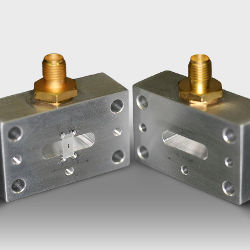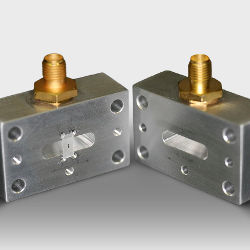
Harnessing the properties of photons is assumed to be one of the fundamental routes to the creation of viable quantum computing architectures. Those architectures will, among other features, need to maintain coherence, or a stable quantum bit (qubit) state, long enough for the algorithm to complete in the coherence time, which may require error correction to enable such completion and reliability; a fabrication process that allows carryover from today’s mass manufacturing process of integrated circuits; and nodes that are identical in construction and capabilities in order to scale successfully.
Recent experimental results in harnessing or stabilizing photons from IBM’s research facility in New York; the University of Waterloo, the University of Toronto, and the University of Innsbruck; and the Max Planck Institute of Quantum Optics have addressed these fundamental conditions in a promising fashion. The methods used in the experiments offer the promise of possible future applications for a quantum Internet, or quantum network, and quantum key distribution.
Cavities and Coherence Times
Two of the projects—an IBM experiment examining superconducting qubits and the Max Planck experiment examining how best to preserve quantum state during transport—yielded a similar finding although examining very disparate areas: Coherence times and control over quantum elements were improved by employing cavities to generate or preserve essential qualities of those elements.
The IBM researchers demonstrated they could maintain a stable qubit state approaching 100 microseconds—an interval they claim falls well within the range of coherence required for large-scale tests of error correction and fault-tolerant quantum computing procedures—by stifling the amount of photons and the actions of those photons near a three-dimensional superconducting qubit. The qubit is about one millimeter in length, suspended in a super-cooled copper cavity about 38 millimeters wide.
The IBM work is significant, according to published commentary by Yale University physics professor Steven Girvin, because it is the most recent example of work that has improved the coherence time of superconducting qubits by five orders of magnitude in just over a decade. In his commentary, Girvin contends that “imperfect microwave hygiene,” rather than any intrinsic materials limits, has been the aggravating factor in limiting coherence times. Girvin says continuing experimentation is demonstrating that residual qubit dephasing, or reversion to classical state, is being caused by stray photons entering the cavities surrounding the superconducting qubits.
According to Matthias Steffen, manager of experimental quantum computing at IBM’s Thomas J. Watson Research Center, protection against dephasing was achieved by equalizing the temperature of photons within the cavity with that of the walls of the cavity itself.
“During the qubit operation the cavity should ideally contain no photons or, strictly speaking, the photon number in the cavity should not fluctuate,” Steffen says. “In our case, we found the cavity population does fluctuate when the cavity is not properly heat sunk, and when it is overcoupled to signal lines which, in turn, are also not heat sunk well. Our solution then included a copper cavity so that the cavity is thermalized, making sure that no photons are present in the cavity during the qubit operation.”
The Max Planck researchers also employed a cavity in which to maximize their efforts. In this case, the creation of a single photon capable of storing the quantum information in a single atom and transferring it via optical fiber to an identical atom located 20 meters from the first. Max Planck researcher Stephan Ritter says the team chose a single gaseous rubidium atom as each node because it was easier to protect the atoms from the surrounding environment and because the energy levels within each atom are well defined, thereby making atom manipulation via laser possible.
“We produce the photon by shining the laser onto the atom from the side,” Ritter says. “By precisely controlling the intensity of the light, you can control the creation of the single photon. The photon is deposited into the cavity, then leaks out. If you just shine the laser beam onto the atom, it can also emit a photon but that might go off in any direction. You want one directed channel into which it goes, and basically the cavity provides us with this clearly defined direction. We have tried to make each of the nodes the same; you can easily scale it up by adding more nodes.”
The cavity in which the photon is deposited is about 500 micrometers long, Ritter says, while the mirrors on either side are slightly larger, about 7.5 millimeters in diameter. The mirrors do not share symmetric reflecting properties, however. One mirror has a much higher transmission quotient, so that the resulting photon has what Ritter says is a 90% probability of leaking out on one side, allowing an operator to more easily couple the photon with the networked optical fiber.
The classical physics view of the action inside the cavity holds that the photon is reflected thousands of times in the effort to impart the atomic quantum state onto it. More accurately, Ritter says, the cavity enhances the interaction between the light field inside the cavity and the atom, leading to enhanced coupling of the atom and photon as compared to free space.
The overall success rate of quantum entanglement between two atoms in the experiment was 2%. Ritter says this is an improvement of many orders of magnitude over predecessor experiments working with ion entanglement in free space, although the closer one gets to the ultimate goal of 100% the more difficult it gets.
The IBM research is significant because it has improved the coherence time of superconducting qubits by five orders of magnitude in just over a decade, notes Yale physicist Steven Girvin.
“What’s important is that the process gives us a handle on all the properties that such a single photon can have,” Ritter says. “We can control the frequency, the direction of the photon using the cavity, and the left- or right-hand polarization of the photon. This is really important because the polarization is what we encode the quantum information in.”
Photons from a Chip
The third experiment in the recent photonic trifecta, the demonstration of a method to produce entangled photon pairs on an integrated circuit, earns praise from Ritter as yet another key step in advancing quantum research further into the mainstream.
“They’ve done great work on integration, on making things small, on using existing microfabrication technology to produce something which might in the future be very useful for doing quantum information processing,” Ritter says. “Each of our nodes is only a single atom with a cavity around, but if you take into account all the optics and all the lasers, one of these nodes fills a whole lab at the moment.”
The Canadian and Austrian research team designed a photonic channel called a Bragg reflection waveguide on an aluminum-gallium arsenide chip that will allow laser light pumped into the chip to produce lower-energy entangled photons that exit the other side of the waveguide. The structure is likened to a many-layered cake by University of Toronto professor Amr Helmy, the chip’s designer. The “cake” consists of a core, surrounded by reflector layers, that will allow a desired wavelength of light to pass through, which results in the creation of the entangled photon pair. The wavelength can be tuned via altering the ratio of aluminum in each layer of the reflectors, as well as the thickness of each layer. This tuning allows the energy levels of the laser light and the photons to be in sync, or phase-matched, which enhances efficiency of the process.
The next step in the process is to integrate the laser source into the waveguide itself, according to team member Rolf Horn, a researcher at Waterloo. That will be achieved by constructing small structures called quantum wells, which will trap electrons supplied from a current source. As current is injected into the structure, these electrons will recombine with holes in the structure’s valance band and emit light.
“At that critical current density, the loss in that mode will be less than the gain and you will have lasing,” Horn says. “Your structure won’t change at all, in the sense you’ll have one monolithic source, where you don’t have to couple a laser from some other component or piece of equipment into the waveguide. The structure will act as both a laser and an entangled photon pair producer, so it’s all integrated into one package.”
Thus far, the team has proved separately that the lasing process and the photon pair generation are viable, says Horn. The team expects to be able to tune the fabrication parameters to better couple the lasing wavelength and photon properties. Helmy says successful demonstration of the integrated technology may have widespread ramifications for quantum communication experiments.
“Instead of doing them in the lab and having to align things with mirrors and such, we can do all that with nanolithography,” he says. “So, we can define it in a CAD program that a computer scientist can use. So, you’re really bringing that stuff to the masses out of the lab.”
Martin Laforest, manager of scientific outreach at the Institute for Quantum Computing at the University of Waterloo, says the experiments all indicate significant breakthroughs.
“Those are very encouraging results, all of them,” Laforest says. “The IBM experiment is the sort that is really closing the gap between practicality and theory—same thing with the work at Max Planck. The idea of light/matter interaction has been around for a while, but now they’ve really been able to transfer from one quantum register to another 20 meters apart, in a 60 meter fiber. That’s a massive result. The idea of quantum networks has been around for ages. Now it’s a reality.”
“Those are very encouraging results, all of them,” says Martin Laforest. “The IBM experiment is the sort that is really closing the gap between practicality and theory—same thing with the work at Max Planck.”
As for the work done in Waterloo, Toronto, and Innsbruck, Laforest says successfully employing established fabrication techniques may revolutionize applications such as quantum key distribution or secure communications. With integrated laser and photon creation on a single chip, he says such technologies could be put on mobile devices, “and the idea of personal quantum cryptography is not a crazy idea.”
Further Reading
Duan, L.-M. and Monroe, C.
Colloquiam: Quantum networks with trapped ions, Reviews of Modern Physics 82, 2, April 28, 2010.
IBM Labs
IBM Research Announces New Advances in Quantum Computing, http://www.youtube.com/watch?v=_NRmOe1b8_s, Feb. 23, 2012.
Paik, H., et al.
Observation of high coherence in Josephson junction qubits measured in a three-dimensional circuit QED architecture, Physical Review Letters 107, 240501, Dec. 5, 2011.
Rigetti, C., et al.
Giant improvements in coherence time for superconducting qubits, Journal Club for Condensed Matter Physics, March 28, 2012.
Svozilik, J., Hendrych, M., and Torres, J.P.
Bragg reflection waveguide as a source of wavelength-multiplexed polarization-entangled photon pairs, Optics Express 20, 14, June 20, 2012.





Join the Discussion (0)
Become a Member or Sign In to Post a Comment